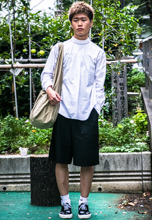
Kara
Posted: 木 10 14 2010
Ask any aspiring girl popstar in Japan who her favourite stars are, and mixed in among AKB48’s Yuko Oshima, Atsuko Maeda and Mariko Shinoda, she’ll probably give names like Jessica and Yuri from Korean pop group Shoujo Jidai (aka Girls’ Generation), and Ha-ra and Seung-Yeon from Kara.
When it comes to boy bands, since the days of Tohoshinki’s stellar rise, there has been a cascade of groups like Big Bang, Super Junior, FT Island, Shinee who have made it big, each of them with a big enough fanbase to have helped them get into the Oricon top ten. While Tohoshinki, Boa and Rain may have led the way, Korean popstars are now making their way to Japan in droves and the big sales they’re nabbing have given an almost festive feeling to what has been for a long while a pretty sedate J-pop scene.
What exactly is the driving force behind the Korean popstar boom, which has made its way into everyday Japanese life in a very short period of time? Here’s a closer look.

Take Shoujo Jidai as an example of the debate raging on the internet about Korean groups being anti-Japanese, and about them having had plastic surgery. The net buzz has included comments such as, ‘Aren’t they anti-Japanese?’ In counter, it could be said that the members of Shoujo Jidai belong to a generation that has no connection with history, and I doubt as to whether there is anything close to ‘anti-Japanese’ sentiment present. It’s probably fair to say that these comments are nothing more than people adding fuel to the fire. Without a doubt, the majority of people who like Shoujo Jidai are young, and for them there is no sense of reality in this criticism.
Then there are the criticisms of them having had plastic surgery. Plastic surgery makes sense if you look at it from the perspective of fashions such as kogyaru (high-school girls with tanned skin, dyed hair and a lot of makeup) and bisuaru visual kei (a style which incorporates extreme make-up and colourful clothing). Between 1980 and 1990 the culture of drastically changing one’s own appearance through the use of make-up and other devices in order to conform to reality was born, and it’s only natural that this has now permeated youth culture.
If plastic surgery is offered up as an extension of these fashions, we can only say that – at the very least – that the importance attached to the term of ‘plastic surgery’ has been turned into something less serious. Even when you put that kind of common sense aside, the criticism of having ‘plastic surgery’ is absolutely nonsense; in actual fact most people will treat it with a, ‘Yeah, I guess so.’
Rather than these sorts of comments, what we should be thinking about in connection with current Korean popstar boom is the implications for Korea in entering the ‘Japanese market’ and the size of the market itself. The Korean music market has followed in similar fashion to the US market: that is, it’s predominantly distributed digitally. In terms of physical CD releases, sales of 200,000 CDs correspond to a million class hit.
On this point, even though it’s gradually leaning towards digital distribution, in Japan physical CDs still have a strong presence, which means that a popular single can be purchased throughout the country, and can enjoy strong sales. The profits for these female artists are huge compared to if they stayed only in Korea; of course Shoujo Jidai, Kara and other Korean popstars have already entered the China, Taiwan and Hong Kong.
The deregulation of the music market (which has lead to the export of Korean culture) answers one of our questions as to why Korean popstars are making their way to Japan. Korea has its eye on Japan, where physical CD sales are forecast to decrease in the future, and is trying to get in before Japan changes their distribution format. It could be posited that Japan is the last underdeveloped playground. That being said, of course one needs to look at the Korean pop-star boom from many angles.
Considering the above discussion, I feel a little bit sad when it seems that the last valuable part of the Japanese music market is disappearing elsewhere. But as someone who continues to buy CDs in the outdated CD market (I must admit here that I am also an iTunes user), I do truly enjoy CDs by Shoujo Jidai, Kara and other artists. If I’m going against the times of my generation, then that’s fine; the Korean pop explosion might be – for some people – a chance to reap rewards, but I’m interested to see what will happen from here to its existence in the shrinking music market.
Tweets
- About Us |
- Work for Time Out |
- Send us info |
- Advertising |
- Mobile edition |
- Terms & Conditions |
- Privacy policy |
- Contact Us
Copyright © 2014 Time Out Tokyo











Add your comment